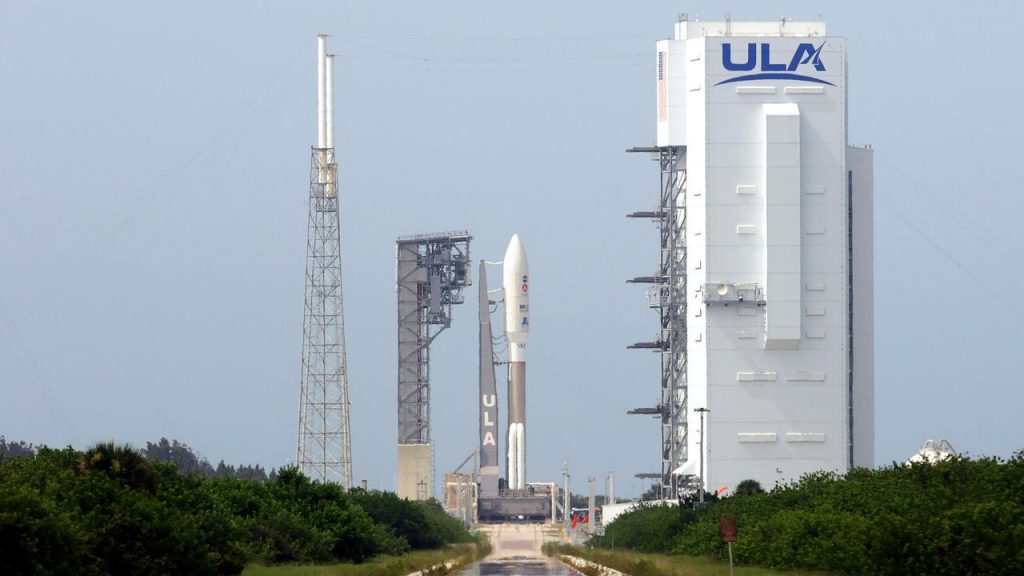Space travel in 2021: Crowd and vehicles on the Moon and Mars
Space travel in 2021: Crowd and vehicles on the Moon and Marson Jan 04, 2021

2021 will be a busy year for space travel as many companies, from industry giants SpaceX and Origin to several small companies, are looking to proceed their space missions. Multiple missions take off for the moon, multiple vehicles are due to land on Mars, and a large number of commercial companies want to launch their new rockets for the first time. What is the program?
This year, many companies are hoping (literally) to launch their brand new space initiatives. For example, nearly thirty companies want to show that their small rockets are working by 2021. Big companies like SpaceX and Blue Origin have much bigger vehicle launches. SpaceX hopes to send the 120-meter-tall Starship into space, and Blue Origin wants to present the nearly 100-meter-tall New Glenn to the world. This is also expected to be the year in which U.S. space agency NASA is working on its procrastination. The highly anticipated James Webb Space Telescope is set to launch in October, when it should have been ten years earlier. NASA also promises that the Space Launch System (SLS) is expected to take off for the first time this year. The biggest and most powerful rocket to date, according to NASA, was actually slated for 2017.Several manned space vehicles, China is building a space station
SpaceX took a big step forward last September by being the first commercial space company to launch astronauts with its own rocket and capsule. SpaceX’s direct competitor, Boeing, hopes to catch up with the company with its own Starliner capsule. Starliner is the direct competitor of the SpaceX Crew Dragon capsule. During the first test flight in 2019, Boeing failed to reach the International Space Station (ISS). Boeing will make a second attempt in March. Yet another spacecraft is targeting the ISS this year: the “mini space shuttle” Dream Chaser. This spacecraft must be able to fly with or without a pilot in low earth orbit and can, for example, deliver supplies to the ISS. If all goes according to plan, China will also launch its own manned space program this year. They go further than rockets and capsules: the Chinese hope to start building their own space station this year and show this station with manned flights.Lots of traffic to the moon, Russia takes over Soviet program
In September 2019, the Indian mission Chandrayaan-2 crashed on the surface of the moon. This year, the Indian space agency is trying again with Chandrayaan-3. If this is successful, India will become the fourth country after Russia, the United States and China to land on the moon. Russia wants to continue the Soviet lunar reconnaissance program Luna in October. The Soviet Union made history with Luna, when Luna 2 became the first man-made object to successfully reach the moon. The last Luna mission was Luna 24 in 1976. With Luna 25, Russia wants to place a lander on the south pole of the moon. At the same time, NASA will take the first concrete steps towards the American return to the moon. This is how Artemis 1 is to unfold: the very first mission of the successor to the Apollo program of the 60s and 70s. This will be the first flight of the aforementioned SLS rocket as well as the first lunar flight of the capsule (unmanned) Orion. This mission can be postponed to 2022.Crowds on the Red Planet
Three countries launched a mission to Mars in July 2020. China sent the Tianwen-1 mission, which includes both a satellite and a lander. If the lander succeeds in landing on the surface of the Red Planet in April, China will become the third country to ever set foot on Mars. The United States has launched the Perseverance rover, which is due to start looking for traces of life from February. The United Arab Emirates was the first Arab country to send a mission to another planet. The “Hope” satellite is expected to arrive in February and will then investigate the atmosphere of Mars.Source: Dodofinance
Blue Origin
Frontlist Latest news
Frontlist News
Frontlist Tech News
Human Civilization On Mars
Human Civilization on Moon
Human Population in Space News Frontlist
Man On the Mars
Man On the Moon
Space Travel
Space Travel Stories
SpaceX
The Mars
The Moon



.jpg)






.jpg)

.jpg)

.jpg)

.jpg)
.jpg)










Sorry! No comment found for this post.